Rocks on the seashore from Rocks & Minerals {Eyewitness} Rock

Learning Chart Types Of Rocks T38299 SupplyMe
The classification and description of the various chemically formed sedimentary rock types appears in the bottom section of the chart below. Photos of each rock type appear beneath the chart. Table 5.5.1 5.5. 1: Classification of Sedimentary Rocks. Step 1: Determine makeup.
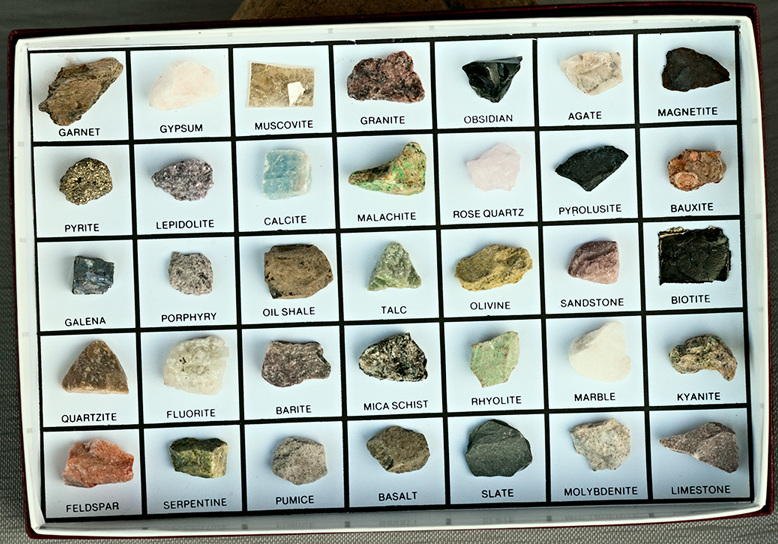
Rocks and Minerals Information on the earth
Together, these three rock types account for all the rocks on earth! The following chart is the basic classification of these three types of rock. Igneous. Igneous rocks form when molten rock (magma) originating from deep within the Earth solidifies. The chemical composition of the magma and its cooling rate determine the final igneous rock type.
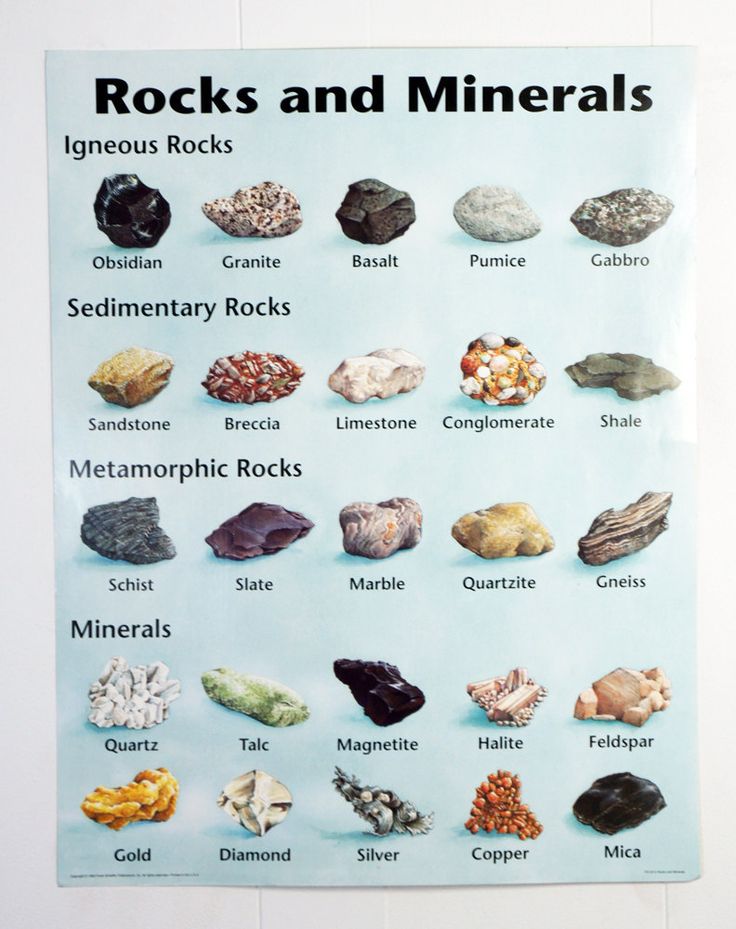
Pin on p r e s e n t
Add water to the cup and set it on the scale. Tare the scale so the reading is no 0.0g. Either tie your string/wire or bend your paperclip around the sample to hold it firmly. Hold the sample in the water with your holding device and then write down the second measurement. This is your wet weight (WW).

Rocks on the seashore from Rocks & Minerals {Eyewitness} Rock
The rock cycle is a series of processes that create and transform the types of rocks in Earth's crust. There are three main types of rocks: sedimentary, igneous, and metamorphic. Each of these rocks are formed by physical changes—such as melting, cooling, eroding, compacting, or deforming —that are part of the rock cycle.
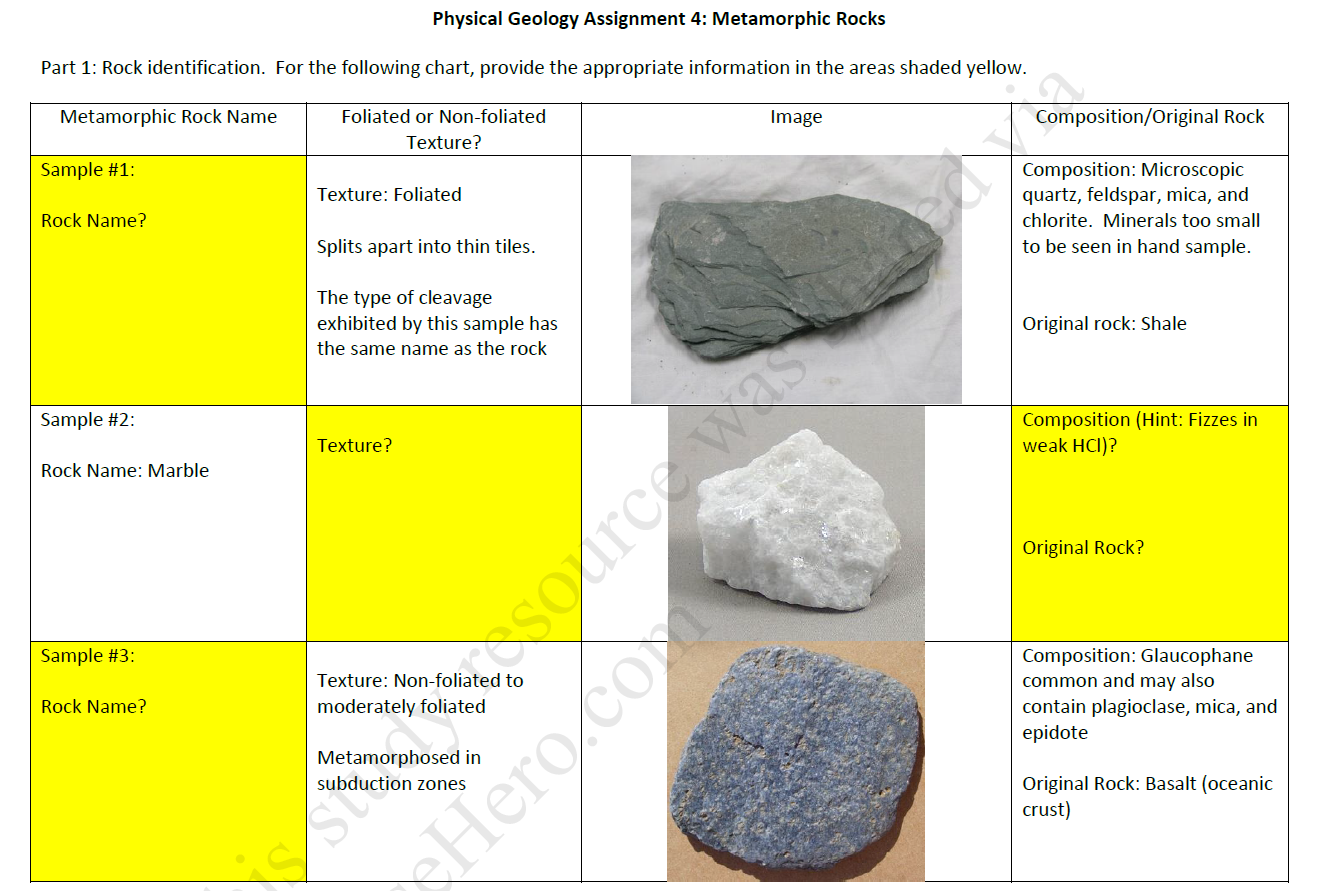
Solved Physical Geology Assignment 4 Metamorphic Rocks Part
There are three kinds of rock: igneous, sedimentary, and metamorphic. Igneous rocks form when molten rock (magma or lava) cools and solidifies. Sedimentary rocks originate when particles settle out of water or air, or by precipitation of minerals from water. They accumulate in layers.

Image result for rock chart Rocks & Minerals Pinterest Geology
Figure 4.1.1 4.1. 1: Granite is a classic coarse-grained (phaneritic) intrusive igneous rock. The different colors are unique minerals. The black colors are likely two or three different minerals. If magma cools slowly, deep within the crust, the resulting rock is called intrusive or plutonic.
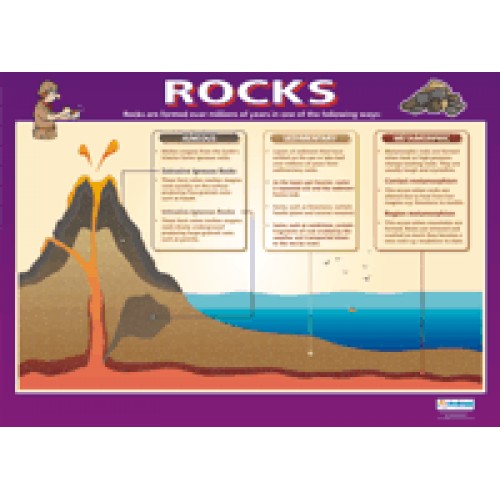
CHART, Rocks
It is defined, as noted above, as the ratio of the weight or mass in air of a unit volume of material at a stated temperature to the weight or mass in air of a unit volume of distilled water at the same temperature. Specific gravity is dimensionless ( i.e., has no units).

Types of Rocks Igneous, Sedimentary & Metamorphic » Selftution
rock, in geology, naturally occurring and coherent aggregate of one or more minerals. Such aggregates constitute the basic unit of which the solid Earth is composed and typically form recognizable and mappable volumes. Rocks are commonly divided into three major classes according to the processes that resulted in their formation. These classes are (1) igneous rocks, which have solidified from.
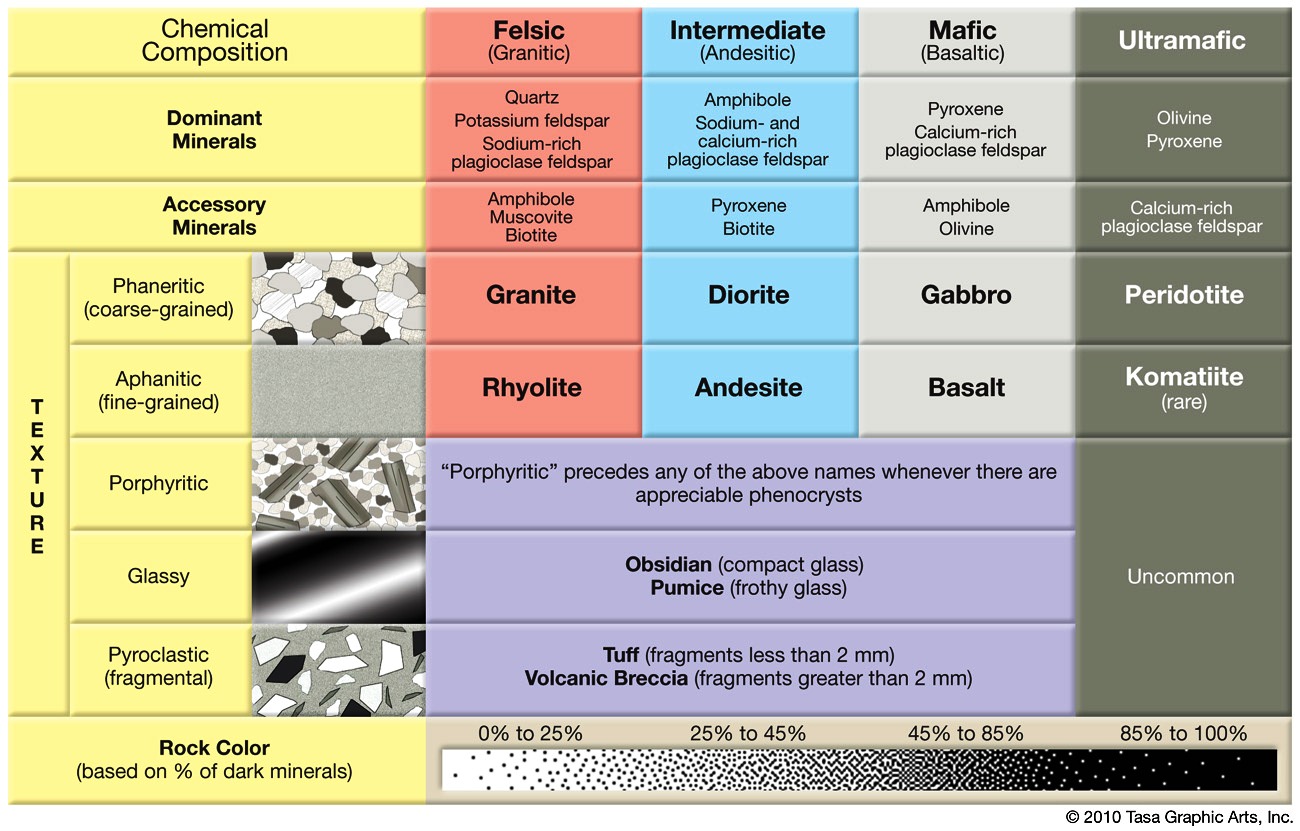
Top 7 Differences Between Metamorphic Rocks and Igneous Rocks
Three Types of Rock Rocks fall into these three groups: Igneous , Sedimentary , and Metamorphic Igneous rocks are formed from melted rock deep inside the Earth. Sedimentary rocks are formed from layers of sand, silt, dead plants, and animal skeletons. Metamorphic rocks formed from other rocks that are changed by heat and pressure underground.

Rocks and Minerals Activities and Anchor Chart Learning Lab Resources
Igneous Rocks. Igneous rocks (fiery rocks) are made when molten material inside or outside the earth cools and becomes solid. This melted rock is called magma when it is inside the earth. When magma finds its way to the surface through cracks or volcanoes, it is called lava. When lava cools on top of the earth's surface, it forms extrusive.
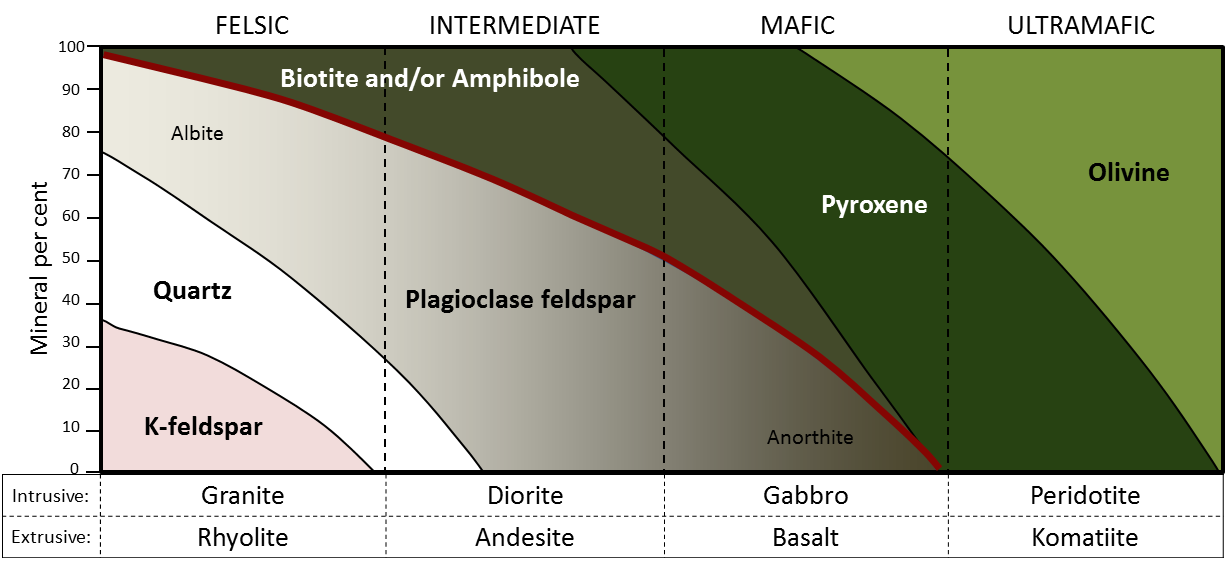
3.4 Classification of Igneous Rocks Physical Geology
Rocks and Minerals By Jan C. Rasmussen (Revised from a booklet by Susan Celestian) 2012 Donations for reproduction from: Freeport McMoRan Copper & Gold Foundation Friends of the Arizona Mining & Mineral Museum. identity, refer to the mineral key or the rock classification charts.

Igneous Rock Chart
Rock Identification Chart Once you've determined what type of rock you've got, look closely at its color and composition. This will help you identify it. Start in the left column of the appropriate table and work your way across. Follow the links to pictures and more information. Igneous Rock Identification Sedimentary Rock Identification

rocks different types Rocks & Minerals Poster ESL Pinterest
Igneous rocks are those that form via the process of melting and cooling. If they erupt from volcanoes onto the surface as lava, they are called extrusive rocks.By contrast, Intrusive rocks are formed from magma that cools underground. If the intrusive rock cooled underground but near the surface, it is called subvolcanic or hypabyssal, and often has visible, but tiny mineral grains.

Ms. Thompson's 7th Grade Science Igneous, Sedimentary, and Metamorphic
List of rock types The following is a list of rock types recognized by geologists. There is no agreed number of specific types of rock. Any unique combination of chemical composition, mineralogy, grain size, texture, or other distinguishing characteristics can describe a rock type.

Rock Identification Printable Precious stones chart, Rock
This activity is perfect for students studying rocks. Simply click on a rock in the rock chart to learn all about it. Learn bout igneous rocks such as obsidian, basalt, granite, pumice, rhyolite, and andecite; metamorphic rocks such as marble, slate, gneiss, schist, anthracite, and quartzite; and sedimentary rocks such as sandstone, limestone, conglomerate, shale, travertine, and dolomite.

rock chart Geography Rocks Pinterest
Sedimentary Sedimentary Rocks: Photos and facts about clastic, chemical and organic sedimentary rocks.